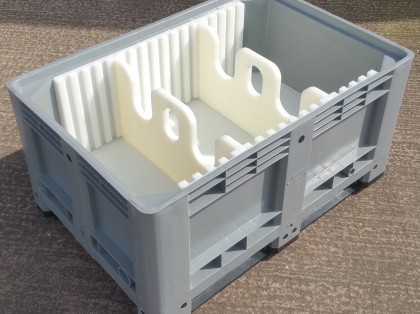So why even choose to produce plastic materials? Firstly, plastic fabrication usually has the benefit of having considerably quick finish times, and unlike most materials there is also the choice of colouring plastic prior to production, rather than after. It’s high malleability means that it has a reasonably low melting temperature, and it’s also more light-weight compared to numerous other resources – both these factors simplify the development operation. In addition, plastics are relatively inert and hence possess high chemical resistance. Irrespective of all of these positives, plastic material is however unsuitable for uses which require a high physical integrity, and is also incredibly vulnerable to damage in the long-term.
CNC Machining
CNC machining is a computer controlled subtractive procedure, that removes material from plastic as a way to generate the desirable shape. The computer is high-tech, with the capability to transform a design into numbers using a âcomputer assisted design computer software program. The numbers are able to control the machine to cut the required form. To setup, the machines need an intermediate step in the development and validation of tool paths. When the machine obtains the tool paths, the subtractive procedure is started. When the assemblage is complete, the component part is cleaned, smoothed, and cut.
For low volume plastic component part applications that require tight tolerances and forms that are difficult to shape, machining is perfect. CNC machining also has low to medium initial costs, and can produce top quality plastic components with minimal completion times. Nevertheless, with increased product sophistication, the price per element climbs up. In addition, the method requires tool access considerations, and certain shapes, for instance those with rounded interior channels, are near-impossible to produce with CNC manufacturing.
Vacuum Formation
Vacuum formation is a method through which plastic is heated up and moulded, ordinarily working with a mould. The scale and sophistication of vacuum-forming machines range between affordable desktop equipment to superior production machinery. {Click here for considerably more details bespoke acrylic displays. displaydevelopments.co.uk is regarded as a website that is loaded with lots of up to date information regarding perspex guard manufacturers.|{For anyone looking into extra info related to plastic heat moulding this specific site thermoforming plastic materials features many more expert articles associated with plastic fabrication. This blog plastic prototype cost provides extensive more info on the subject of plastic fabrication.
It can be suitable for any venture, from custom designs to large-scale manufacturing, taking into consideration the large choice of equipment offered and that automatization is an option when necessary. Even so, there is minimum freedom in the different types of shape it can develop, and is also unfortunately exclusively competent to produce components with basic geometries. When compared with other techniques, tooling costs are minimal, given that vacuum formation merely needs minimal forces and pressures. Generally, for small manufacturing sizes the moulds are constructed of Three-dimensional printed resin, or possibly plaster, and for higher manufacturing sizes more robust equipment made of metal is commonly used.
The development method starts off with a sheet of plastic material getting clamped and heated up so that the plastic becomes mouldable. The plastic will then be put into the mould and chilled, and frequently fans as well as other chilling techniques are utilised in an effort to speed up the cooling process. The final stage involves any excess plastic being taken off.

